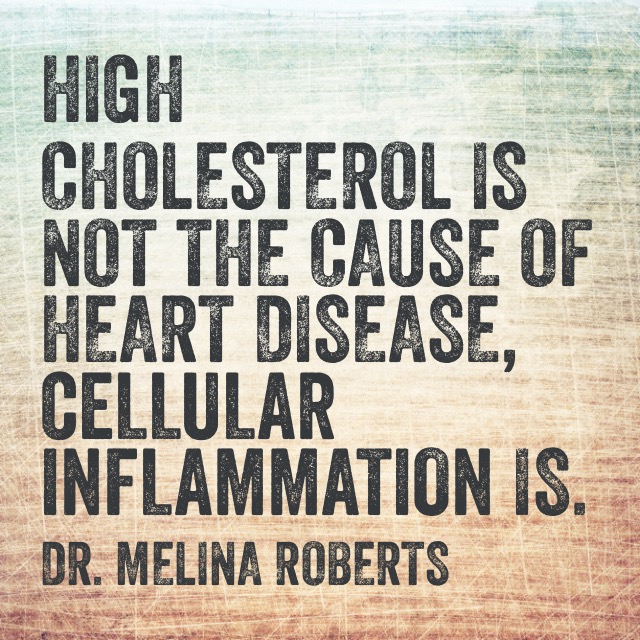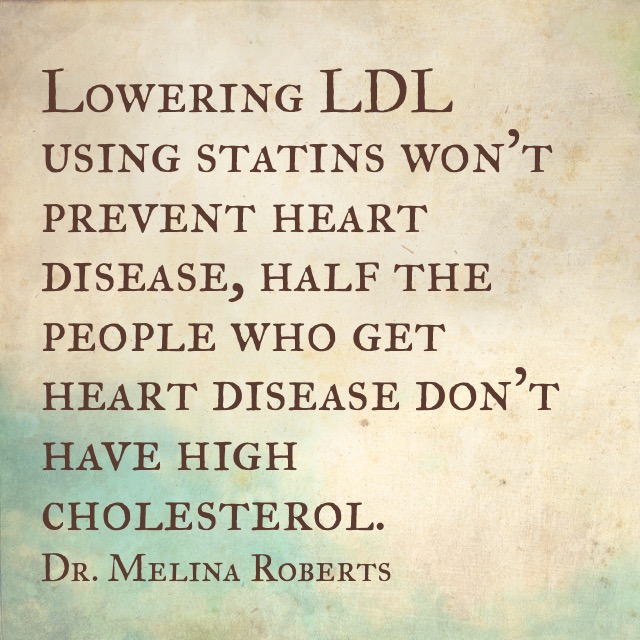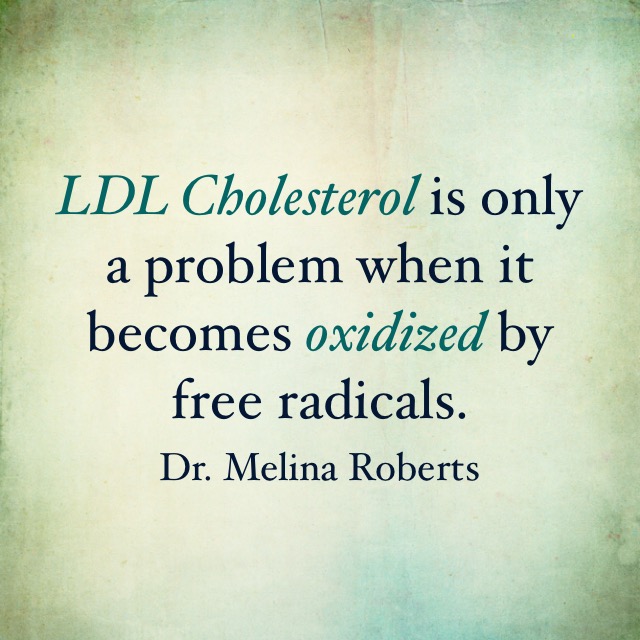Conventional thinking is that HDL is the “good” cholesterol and LDL is the “bad” cholesterol, but the truth is you need both HDL and LDL because they are part of a dynamic function in the body. Really there is no good or bad cholesterol. They are both needed and necessary parts of biological processes in the body.
Cholesterol is not the cause of heart disease. We need cholesterol.
Cholesterol is essential in our body, not something to be feared or stopped.
- Cholesterol is the building block of all your hormones including cortisol (stress hormone), sex hormones (estrogen, progesterone, testosterone) and thyroid hormones.
- Cholesterol is needed to make bile acids which is needed for the digestion of fats.
- Cholesterol is an essential component of all cell membranes, especially of the nervous system, brain, spinal cord, peripheral nerves, as it is incorporated into the myelin sheath that covers nerve fibers.
- Cholesterol is important for the immune system. LDL packages and inactivates more than 90% of the worst and most toxic bacterial products and toxins that enter the body.
- Vitamin D is made from cholesterol. Less than optimal Vitamin D levels are linked to heart disease, osteoporosis, cancer, depression. The best way to get vitamin D is through exposure to natural sunlight. The UVB rays in sunlight interact with cholesterol and convert it to vitamin D in the body. If cholesterol levels are too low then you will not be able to convert sunlight to vitamin D in the body.
This is information that you really need to understand and consider when you are considering taking medications that lower cholesterol levels.
LDL and HDL are cholesterol transporters in the body. High-density lipoproteins or HDL: transport cholesterol away from tissues to the liver for the liver to process it. Low-density lipoproteins or LDL: transport cholesterol from the liver to the tissues. They deposit cholesterol at receptor sites on the membranes of cells. LDL cholesterol is only a problem when it becomes oxidized by free radicals. Free radicals are molecules that become unstable by losing an electron and seeks to steal an electron from another area to make up for the one that’s missing. LDL – B: dense, small, more likely to become oxidized than other types of LDL (ie. LDL-A, LDL-1). Oxidized LDL – big, sticky, doesn’t interfere properly with cellular receptors seeking cholesterol. Instead it holds onto cholesterol and ends up sticking to the lining of inflamed arteries, forming the beginning of plaque. We need enough antioxidants in the body to prevent LDL and lining of blood vessels from becoming oxidized. LDL oxidizes with trans fats and excess sugar. Diets high in sugar and low in fibre leads to increased amount of fat in blood (triglycerides) through a process called lipogenesis. HDL-1: smaller, denser, more likely to become oxidized.
High cholesterol is not the cause of heart disease, cellular inflammation is. Lowering LDL using statins won’t prevent heart disease, half the people who get heart disease don’t have high cholesterol. Dietary cholesterol (such as egg yolks, butter, red meat) does not cause LDL to oxidize, free radicals do.




